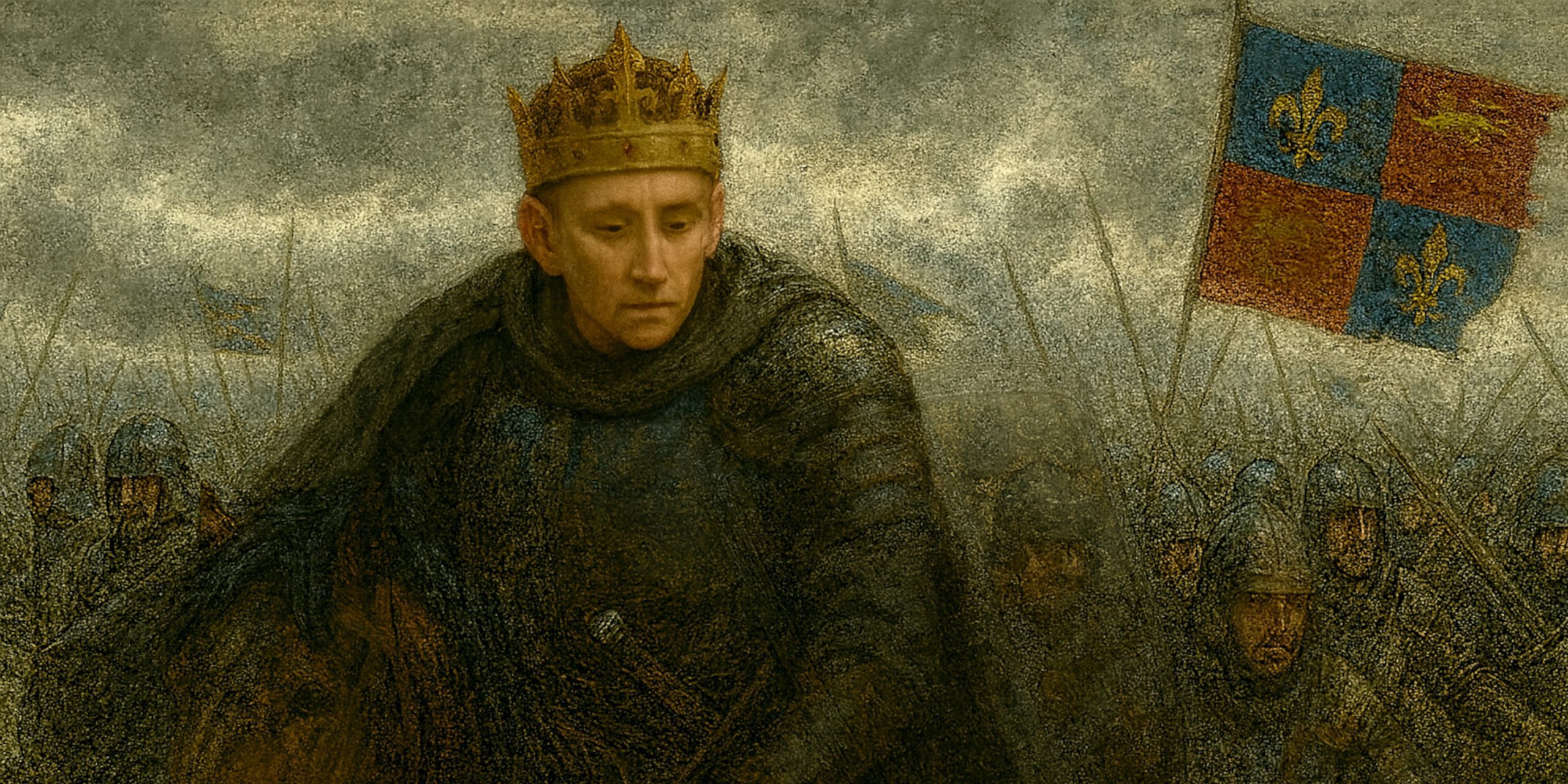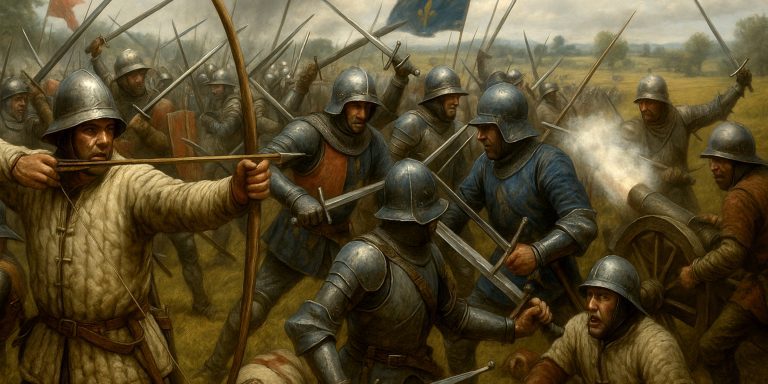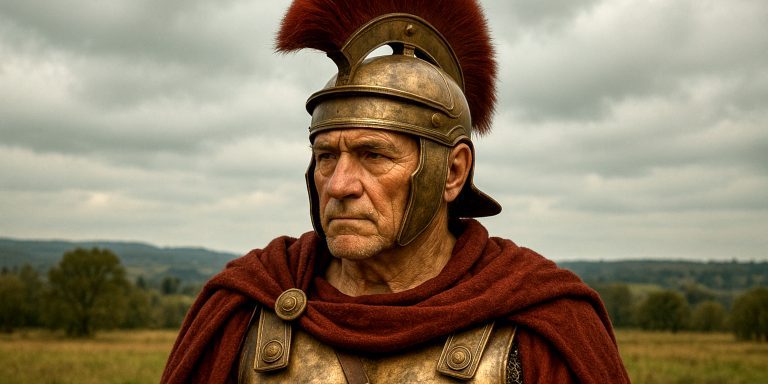
Henry VI of England remains one of the most enigmatic and troubled monarchs in English history. Born into conflict and instability, his reign was marked by mental illness, dynastic warfare, and political mismanagement that contributed to the eruption of the Wars of the Roses. Though deeply pious and well-meaning, he lacked the temperament and authority to rule in such a violent and ambitious age.
Early Life and Reign
Henry VI was born on 6 December 1421, the only child of Henry V and Catherine of Valois. He became King of England at just nine months old following his father’s death in 1422, and King of France a year later under the terms of the Treaty of Troyes. His dual monarchy was largely nominal, with regents and protectors ruling on his behalf until he came of age.
Once he assumed personal rule in 1437, his reign quickly unravelled. By temperament, he was more suited to the Church than the battlefield or court politics. He lacked his father’s charisma and martial prowess and proved unable to manage the increasingly fractious nobility or stem the decline of English holdings in France.
Arms and Armour
Henry VI was not known for military leadership, but as a king of England during a period of conflict, he would have had access to high-quality ceremonial and functional arms and armour, even if he rarely used them in battle. Surviving records suggest he owned several suits of armour, though none were specifically designed for field command.
Typical equipment for royalty in his era included:
- Armour: Plate harness of Gothic style, particularly imported from Italy or the Low Countries. English and Milanese armourers supplied the royal household.
- Sword: A ceremonial longsword with heraldic engravings, likely used in court and coronation rituals.
- Tabard: Royal surcoat bearing the arms of England and France quartered, often worn during state occasions or military mustering.
- Crown and regalia: Used during coronations at Westminster and Notre-Dame in Paris, reflecting the dual monarchy claim.
There is no known surviving suit of armour directly attributed to Henry VI. Most items tied to his court were likely melted down, recycled, or lost during the civil war and subsequent Tudor consolidation.
Battles and Military Accumen
Henry VI did not lead troops in person and showed little aptitude for war or strategy. His reign, however, was dominated by major conflicts, both external and civil. His inability to control noble factions or to defend the remaining English territories in France undermined his legitimacy and destabilised the realm.
Key military events during his reign:
| Battle | Date | Outcome | Significance |
|---|---|---|---|
| Battle of Verneuil | 1424 | English victory | Pre-dated his personal rule but strengthened English hold in Normandy |
| Loss of Normandy | 1449–1450 | French reconquest | Catastrophic for English morale and the king’s image |
| First Battle of St Albans | 1455 | Yorkist victory | Marked the start of the Wars of the Roses |
| Battle of Wakefield | 1460 | Lancastrian victory | Richard of York killed, bolstering Queen Margaret’s faction |
| Battle of Towton | 1461 | Decisive Yorkist victory | Henry deposed, Edward IV proclaimed king |
| Battle of Barnet | 1471 | Yorkist victory | Warwick killed, Henry returned to Tower of London |
| Battle of Tewkesbury | 1471 | Yorkist victory | Henry’s son, Prince Edward, killed in battle |
Henry’s main military role was as a figurehead for the Lancastrian cause. Most military leadership fell to Queen Margaret of Anjou, Edmund Beaufort (Duke of Somerset), and Richard Neville (Earl of Warwick), all of whom shifted the balance of power during the conflict.
Where to See Artifacts from His Reign
Although few personal belongings of Henry VI survive, museums and institutions across the UK hold artefacts and manuscripts from his reign.
Highlights include:
- The British Library, London: Holds illuminated manuscripts commissioned during his reign, including the famous Talbot Shrewsbury Book (Royal 15 E VI), gifted to Margaret of Anjou.
- Eton College and King’s College, Cambridge: Both founded by Henry VI, with some original architectural elements and artefacts surviving.
- Westminster Abbey: Henry VI is buried here, although his remains were moved after the Tudor accession to counter Lancastrian cult veneration.
- The Museum of London and the V&A: Contain period arms, textiles, and ceremonial items typical of 15th-century court life, even if not directly tied to the king himself.
Archaeology and Recent Discoveries
Although Henry VI’s reign did not leave behind rich caches of royal relics, archaeology has continued to uncover significant finds from the period, especially from battles and urban contexts.
- Towton Battlefield: Ongoing digs have revealed mass graves and arrowheads consistent with the scale and ferocity of the 1461 battle. These findings underscore the brutality of the conflict that cost Henry his crown.
- London and York: Urban excavations frequently yield 15th-century domestic and military items, offering insight into the material culture of the Wars of the Roses period.
- Eton and Cambridge: Recent architectural studies have uncovered original features and foundations from Henry’s educational foundations, demonstrating his enduring legacy in this area.
Legacy
Henry VI remains a tragic figure. His personal piety and commitment to education contrast sharply with his political ineffectiveness. His failure to assert authority or maintain unity among the nobility opened the door to dynastic war. Despite this, he was venerated by some in the posthumous years, especially in the north, where miracles were attributed to his tomb.
His lasting contributions are not military but educational. The founding of Eton and King’s College, Cambridge, stand as reminders of a king who, for all his faults, aimed to nurture learning and faith in a fractured world.
Watch the documentary:



